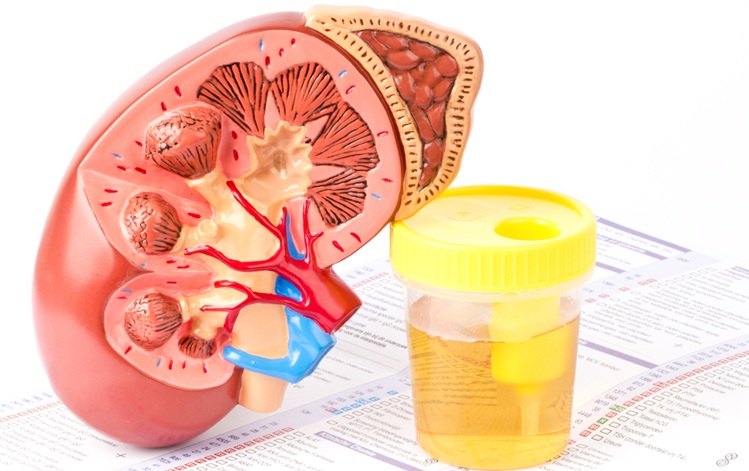AACC Advises Against Using Coronavirus Test CT Values to Guide COVID-19 Patient Care
|
By LabMedica International staff writers Posted on 09 Jul 2021 |

Illustration
The American Association for Clinical Chemistry (AACC; Washington, DC, USA) has issued a public statement advising against the use of coronavirus test cycle threshold (Ct) values to guide COVID-19 treatment or public health efforts.
The medical community has become increasingly interested in the possibility of using coronavirus test Ct values to improve care for COVID-19 patients and overall management of the pandemic. When a patient gets a standard coronavirus test - known as a qualitative PCR test -Ct values are generated as part of the testing process. These values typically have an inverse relationship with the amount of virus in a patient specimen, with low Ct values indicating a high amount of virus in a sample, and high Ct values indicating the reverse. Because of this, some research has suggested that Ct values could potentially identify patients who have high viral loads and are at increased risk for serious disease. Other findings have also indicated that Ct values could potentially identify patients who aren’t infectious (i.e. those with low viral loads), which could improve contact tracing and outbreak tracking efforts.
However, conclusive data supporting the use of Ct values are lacking. In spite of these studies, many others in the medical community have cautioned against the use of Ct values, arguing that these values have numerous shortcomings and can’t reliably predict disease severity or transmissibility. In order to bring clarity to this issue, AACC members have released a statement that details the limitations of Ct values and recommends against their use. The statement emphasizes that, even though Ct values correlate with the amount of virus in specific specimens, studies have not actually established a relationship between Ct values and a patient’s overall viral load or infectiousness.
There are also numerous factors aside from the amount of virus in a specimen that can impact the Ct values generated during coronavirus testing. AACC’s statement lists all of these factors, which include variables such as patient age, the test instruments used, and even whether or not a patient blows their nose before sample collection. Even with these limitations, though, AACC’s statement acknowledges that clinicians might still want access to Ct values in certain circumstances. If clinical laboratories decide to report Ct values to clinicians who request them, the association recommends that labs include a prominent comment with every report explaining that the use of Ct values to guide patient management is discouraged and why.
“Along with the vaccines, coronavirus testing continues to play a critical role in managing the COVID-19 pandemic around the world,” said AACC President Dr. David G. Grenache. “AACC’s experts have therefore put together this document to provide much-needed guidance on this particular area of coronavirus testing, and to ensure that coronavirus PCR tests continue to be used in a way that best serves patient and public health needs.”
Related Links:
AACC
The medical community has become increasingly interested in the possibility of using coronavirus test Ct values to improve care for COVID-19 patients and overall management of the pandemic. When a patient gets a standard coronavirus test - known as a qualitative PCR test -Ct values are generated as part of the testing process. These values typically have an inverse relationship with the amount of virus in a patient specimen, with low Ct values indicating a high amount of virus in a sample, and high Ct values indicating the reverse. Because of this, some research has suggested that Ct values could potentially identify patients who have high viral loads and are at increased risk for serious disease. Other findings have also indicated that Ct values could potentially identify patients who aren’t infectious (i.e. those with low viral loads), which could improve contact tracing and outbreak tracking efforts.
However, conclusive data supporting the use of Ct values are lacking. In spite of these studies, many others in the medical community have cautioned against the use of Ct values, arguing that these values have numerous shortcomings and can’t reliably predict disease severity or transmissibility. In order to bring clarity to this issue, AACC members have released a statement that details the limitations of Ct values and recommends against their use. The statement emphasizes that, even though Ct values correlate with the amount of virus in specific specimens, studies have not actually established a relationship between Ct values and a patient’s overall viral load or infectiousness.
There are also numerous factors aside from the amount of virus in a specimen that can impact the Ct values generated during coronavirus testing. AACC’s statement lists all of these factors, which include variables such as patient age, the test instruments used, and even whether or not a patient blows their nose before sample collection. Even with these limitations, though, AACC’s statement acknowledges that clinicians might still want access to Ct values in certain circumstances. If clinical laboratories decide to report Ct values to clinicians who request them, the association recommends that labs include a prominent comment with every report explaining that the use of Ct values to guide patient management is discouraged and why.
“Along with the vaccines, coronavirus testing continues to play a critical role in managing the COVID-19 pandemic around the world,” said AACC President Dr. David G. Grenache. “AACC’s experts have therefore put together this document to provide much-needed guidance on this particular area of coronavirus testing, and to ensure that coronavirus PCR tests continue to be used in a way that best serves patient and public health needs.”
Related Links:
AACC
Latest COVID-19 News
- New Immunosensor Paves Way to Rapid POC Testing for COVID-19 and Emerging Infectious Diseases
- Long COVID Etiologies Found in Acute Infection Blood Samples
- Novel Device Detects COVID-19 Antibodies in Five Minutes
- CRISPR-Powered COVID-19 Test Detects SARS-CoV-2 in 30 Minutes Using Gene Scissors
- Gut Microbiome Dysbiosis Linked to COVID-19
- Novel SARS CoV-2 Rapid Antigen Test Validated for Diagnostic Accuracy
- New COVID + Flu + R.S.V. Test to Help Prepare for `Tripledemic`
- AI Takes Guesswork Out Of Lateral Flow Testing
- Fastest Ever SARS-CoV-2 Antigen Test Designed for Non-Invasive COVID-19 Testing in Any Setting
- Rapid Antigen Tests Detect Omicron, Delta SARS-CoV-2 Variants
- Health Care Professionals Showed Increased Interest in POC Technologies During Pandemic, Finds Study
- Set Up Reserve Lab Capacity Now for Faster Response to Next Pandemic, Say Researchers
- Blood Test Performed During Initial Infection Predicts Long COVID Risk
- Low-Cost COVID-19 Testing Platform Combines Sensitivity of PCR and Speed of Antigen Tests
- Finger-Prick Blood Test Identifies Immunity to COVID-19
- Quick Test Kit Determines Immunity Against COVID-19 and Its Variants
Channels
Clinical Chemistry
view channel
VOCs Show Promise for Early Multi-Cancer Detection
Early cancer detection is critical to improving survival rates, but most current screening methods focus on individual cancer types and often involve invasive procedures. This makes it difficult to identify... Read more
Portable Raman Spectroscopy Offers Cost-Effective Kidney Disease Diagnosis at POC
Kidney disease is typically diagnosed through blood or urine tests, often when patients present with symptoms such as blood in urine, shortness of breath, or weight loss. While these tests are common,... Read moreMolecular Diagnostics
view channel
Urine Test Detects Early Stage Pancreatic Cancer
Pancreatic cancer remains among the hardest cancers to detect early. In the UK, around 10,000 people are diagnosed each year, but only 5% survive beyond five years. Late diagnosis is a major factor—more... Read more
Genomic Test Could Reduce Lymph Node Biopsy Surgery in Melanoma Patients
Accurately determining whether melanoma has spread to the lymph nodes is crucial for guiding treatment decisions, yet the standard procedure—sentinel lymph node biopsy—remains invasive, costly, and unnecessary... Read moreHematology
view channel
ADLM’s New Coagulation Testing Guidance to Improve Care for Patients on Blood Thinners
Direct oral anticoagulants (DOACs) are one of the most common types of blood thinners. Patients take them to prevent a host of complications that could arise from blood clotting, including stroke, deep... Read more
Viscoelastic Testing Could Improve Treatment of Maternal Hemorrhage
Postpartum hemorrhage, severe bleeding after childbirth, remains one of the leading causes of maternal mortality worldwide, yet many of these deaths are preventable. Standard care can be hindered by delays... Read more
Pioneering Model Measures Radiation Exposure in Blood for Precise Cancer Treatments
Scientists have long focused on protecting organs near tumors during radiotherapy, but blood — a vital, circulating tissue — has largely been excluded from dose calculations. Each blood cell passing through... Read moreImmunology
view channel
Blood-Based Liquid Biopsy Model Analyzes Immunotherapy Effectiveness
Immunotherapy has revolutionized cancer care by harnessing the immune system to fight tumors, yet predicting who will benefit remains a major challenge. Many patients undergo costly and taxing treatment... Read more
Signature Genes Predict T-Cell Expansion in Cancer Immunotherapy
Modern cancer immunotherapies rely on the ability of CD8⁺ T cells to rapidly multiply within tumors, generating the immune force needed to eliminate cancer cells. However, the biological triggers behind... Read moreMicrobiology
view channel
Fast Noninvasive Bedside Test Uses Sugar Fingerprint to Detect Fungal Infections
Candida bloodstream infections are a growing global health threat, causing an estimated 6 million cases and 3.8 million deaths annually. Hospitals are particularly vulnerable, as weakened patients after... Read more
Rapid Sepsis Diagnostic Device to Enable Personalized Critical Care for ICU Patients
Sepsis is a life-threatening condition that occurs when the body’s response to infection spirals out of control, damaging organs and leading to critical illness. Patients often arrive at intensive care... Read morePathology
view channel
New Molecular Analysis Tool to Improve Disease Diagnosis
Accurately distinguishing between similar biomolecules such as proteins is vital for biomedical research and diagnostics, yet existing analytical tools often fail to detect subtle structural or compositional... Read more
Tears Offer Noninvasive Alternative for Diagnosing Neurodegenerative Diseases
Diagnosing and monitoring eye and neurodegenerative diseases often requires invasive procedures to access ocular fluids. Ocular fluids like aqueous humor and vitreous humor contain valuable molecular information... Read moreTechnology
view channel
Cell-Sorting Device Uses Electromagnetic Levitation to Precisely Direct Cell Movement
Sorting different cell types—such as cancerous versus healthy or live versus dead cells—is a critical task in biology and medicine. However, conventional methods often require labeling, chemical exposure,... Read more
Embedded GPU Platform Enables Rapid Blood Profiling for POC Diagnostics
Blood tests remain a cornerstone of medical diagnostics, but traditional imaging and analysis methods can be slow, costly, and reliant on dyes or contrast agents. Now, scientists have developed a real-time,... Read moreIndustry
view channel
Qiagen Acquires Single-Cell Omics Firm Parse Biosciences
QIAGEN (Venlo, Netherlands) has entered into a definitive agreement to fully acquire Parse Biosciences (Seattle, WA, USA), a provider of scalable, instrument-free solutions for single-cell research.... Read more
Puritan Medical Products Showcasing Innovation at AMP2025 in Boston
Puritan Medical Products (Guilford, ME, USA), the world’s most trusted manufacturer of swabs and specimen collection devices, is set to exhibit at AMP2025 in Boston, Massachusetts, from November 11–15.... Read more
Advanced Instruments Merged Under Nova Biomedical Name
Advanced Instruments (Norwood, MA, USA) and Nova Biomedical (Waltham, MA, USA) are now officially doing business under a single, unified brand. This transformation is expected to deliver greater value... Read more
























